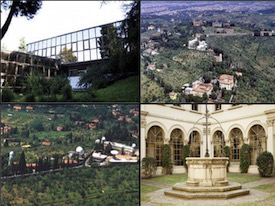Speaker
Dr
Alessandro Nagar
(IHES)
Description
The direct detection by the LIGO detector of the gravitational waves emitted by a coalescing black hole binary (GW150914) has marked the beginning of gravitational wave astronomy. Motivated by the recent experimental result, I will review recent results about analytical effective-one-body (EOB) approach to the general-relativistic two-body dynamics, notably its completion using numerical relativity (NR) simulations, stressing its necessity to compute the (thousands of) analytical waveform templates needed for the actual data analysis of GW events like GW150914.
I will mainly report on recent result about the EOB(NR) approach concerning: (i) the coalescence of (spinning) black hole binaries (BBHs), showing the performance of a recently completed, NR-informed, EOB model (arXiv:1506.08457) able to generate highly faithful waveform from the quasi-circular inspiral, through plunge, merger and ringdown; (ii) the coalescence of neutron star (NS) binaries, with particular emphasis on the modelization of tidal effects up to merger, whose measurability in gravitational wave experiments will allow us to put strong constraints on the equation of state of ultra-dense matter; (iii) the strong-field scattering of BBHs as a useful numerical laboratory to extract strong-field information to complete the EOB analytical model.
A class of effective-one-body waveform templates for coalescing BBHs, similar to the one I will discuss during the talk, has been crucially used in the recent analysis of the gravitational wave event GW150914
Primary author
Dr
Alessandro Nagar
(IHES)

